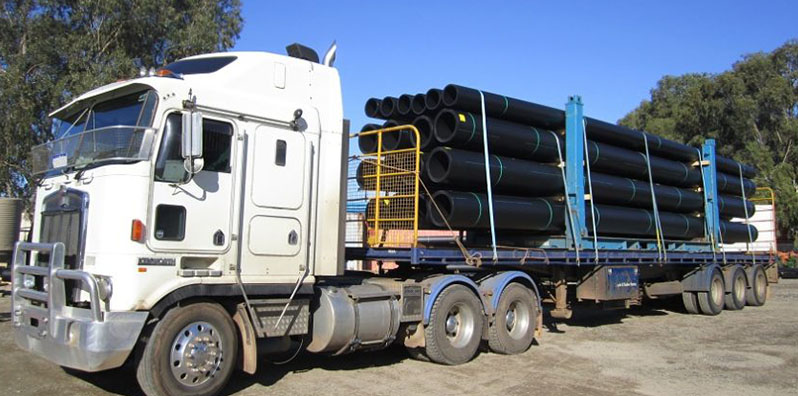17
Aug
How To Safely Transport HDPE Pipe?
Transporting HDPE (High-Density Polyethylene) pipes may seem like a challenging task, but with proper care and adherence to safety guidelines, it can be performed smoothly and efficiently. HDPE pipes are known for their durability and flexibility, making them a popular choice for various industrial applications. This article will provide you with a step-by-step guide on how to safely transport HDPE pipes, ensuring their integrity throughout the process.
How To Safely Transport HDPE Pipe?
Step 1: Assess the Transportation Requirements
Before you embark on transporting HDPE pipes, it is essential to evaluate the transportation requirements. Begin by determining the quantity of pipes to be transported, their dimensions, and weight. This will help you select the appropriate transportation vehicle and equipment required for the task.
Step 2: Choose the Right Transportation Vehicle
When it comes to transporting HDPE pipes, selecting the right transportation vehicle is crucial. Opt for a vehicle that can securely accommodate the length and weight of the pipes. Flatbed trucks or specially designed trailers with adequate tie-down points are often preferred for this purpose. Ensure that the vehicle’s capacity aligns with the weight limitations of the pipes.

Step 3: Inspect the HDPE Pipes
Thoroughly inspect the HDPE pipes before transportation. Look for any visible damages or defects such as cracks, deformities, or signs of wear and tear. It is crucial to identify and address any issues before transporting the pipes to prevent further damage during transit.
Step 4: Secure the Pipes
Properly securing the HDPE pipes is of utmost importance to prevent any movement or damage during transportation. Use appropriate tie-downs such as straps, chains, or ropes, ensuring that they are tightly fastened and evenly distributed across the length of the pipes. This will help maintain their structural integrity and prevent any shifts that could lead to potential harm.
Step 5: Protect the Pipes
To safeguard the HDPE pipes from external factors such as weather elements or physical impact, consider using protective measures. Wrap the pipes with a suitable covering material, like heavy-duty plastic or foam, to shield them from scratches, scuffs, or moisture. This additional layer of protection will minimize any potential damage during transit.
Step 6: Secure the Load
After securing and protecting the pipes, it is crucial to ensure the overall load stability. Arrange the pipes in a way that balances their weight distribution and minimizes the risk of tipping over or shifting. Remember to secure the load at multiple points with the help of straps or additional support structures to prevent any unforeseen movements during transportation.
Step 7: Plan the Route
Efficient route planning plays a vital role in safely transporting HDPE pipes. Consider factors like road conditions, traffic congestion, bridge capacity, and underpasses’ height clearance to choose the most suitable route. Avoid areas with potential road hazards or uneven surfaces that could cause vibrations leading to pipe damage.
Step 8: Practice Safe Driving Habits
While transporting HDPE pipes, it is crucial to practice safe driving habits. Drive cautiously, ensuring a smooth and steady motion, to minimize any sudden movements that could affect the pipes’ stability. Follow all traffic regulations, maintain a safe distance from other vehicles, and gradually navigate through turns and curves to prevent any excessive stress on the pipes.
Step 9: Check Regularly
During transit, make sure to periodically check the load and reinspect the ties to ensure they remain tight and secure. Adjust as needed, especially after encountering bumps, uneven terrain, or sudden stoppages. Regularly monitoring the load’s condition will help identify any issues promptly and address them before they escalate.
In conclusion, safely transporting HDPE pipes requires careful planning, proper securing, and adequate protection. By following the step-by-step guide outlined above, you can ensure the integrity of the pipes throughout their transportation journey. Remember, by selecting the right transportation vehicle, securing the load correctly, and practicing safe driving habits, you will minimize the risk of damage and ensure the HDPE pipes arrive safely at their destination.

